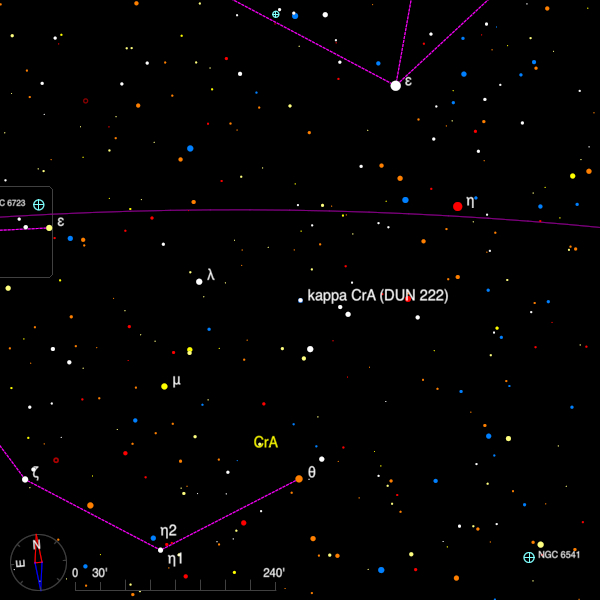July 2021 - Double Star of the Month
On summer evenings the beautiful binary star 70 Ophuichi (see this column for July 2008) is well placed for observation. It is part of a triangle of naked-eye stars which also include 68 Oph (= H VI 2), a wide and unequal Herschel pair) and 67 Oph (= BU 1125), a very unequal and close Burnham pair which is now closing. Draw a line from 70 through 68 and extend it by the same distance and you will alight on STF 2244 (17 57 04.32 +00 04 00.0), also a close binary, but more tractable than BU 1125 for the observer with moderate aperture.

The period is 475 years and in mid-2021 the separation is 0".69. The stars are magnitudes 6.6 and 6.9 so 20-cm should be sufficient to see them separated. By 2027 they will start to slowly close again so this is a good opportunity for observation. Note that if you are using the second edition of the Cambridge Double Star Atlas, the star appears as STF 2224. Gaia EDR3 offers no up-to-date information on parallax, but Hipparcos found a distance of 386 light-years but with an uncertainty of 33 light-years.
The components of kappa CrA (alias DUN 222 - 18 33 23.13 -38 43 33.6), on the other hand, probably do form a physical system. The stars, of magnitudes 5.6 and 6.2, are currently 20" apart and lie almost in a north-south direction. When James Dunlop discovered this pair they were closer to 30".

The proper motions from Gaia EDR3 show that the stars are moving in similar directions through space, the radial velocities are very close, and the parallax measurements from the satellite tell us that both stars are about 717 light-years away. Both components are white, being late B in spectral type. The system lies close to the 'Teapot' of Sagittarius and can be found 5 degrees south and slightly east of epsilon Sgr (V = 1.9).
Incidentally, epsilon Sgr has a companion of magnitude 14.3 - discovered by T. J. J. See in 1896 which has been measured only four times since 1896. The current distance is 39".
Bob Argyle - Double Star Section Director